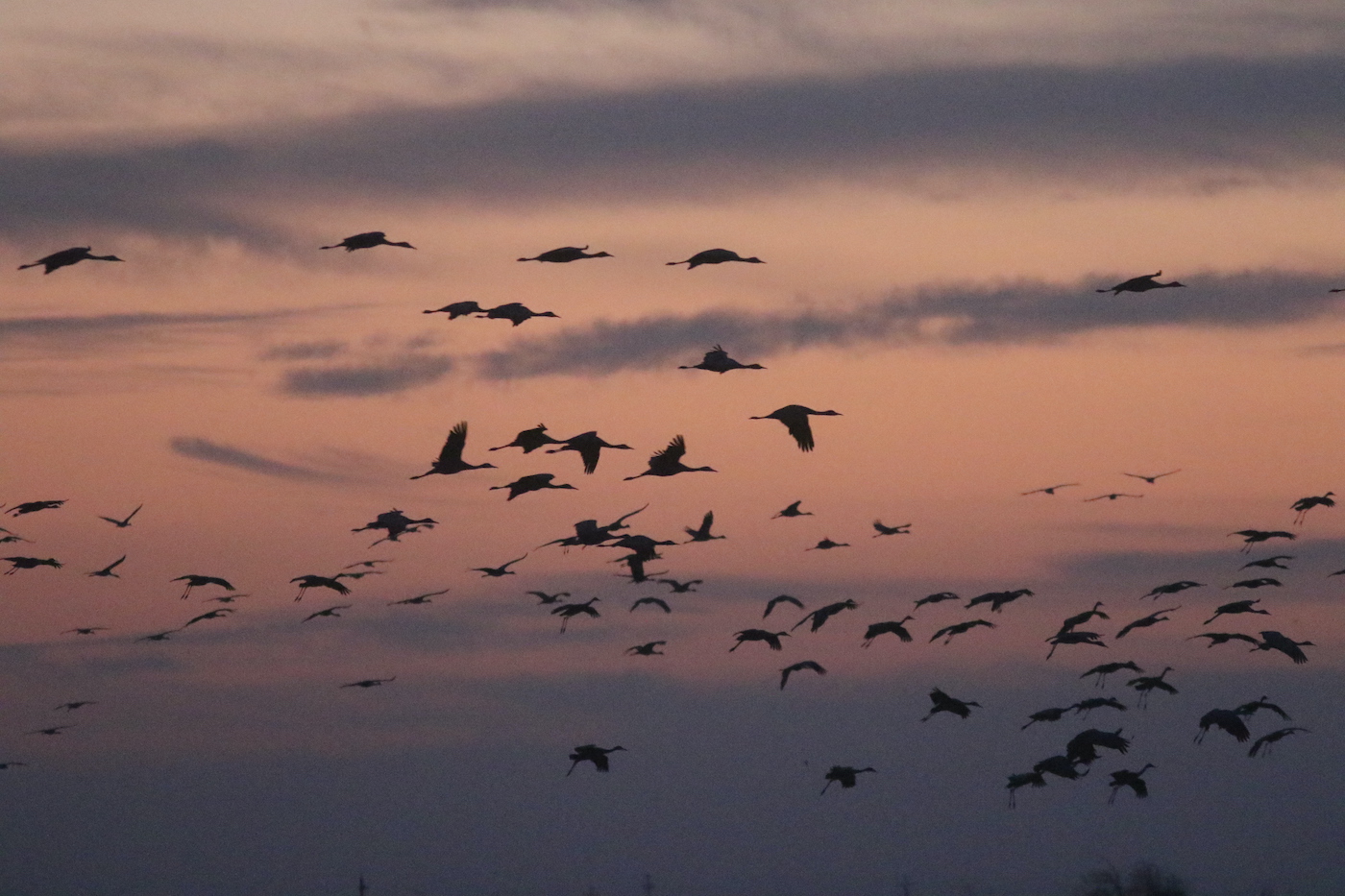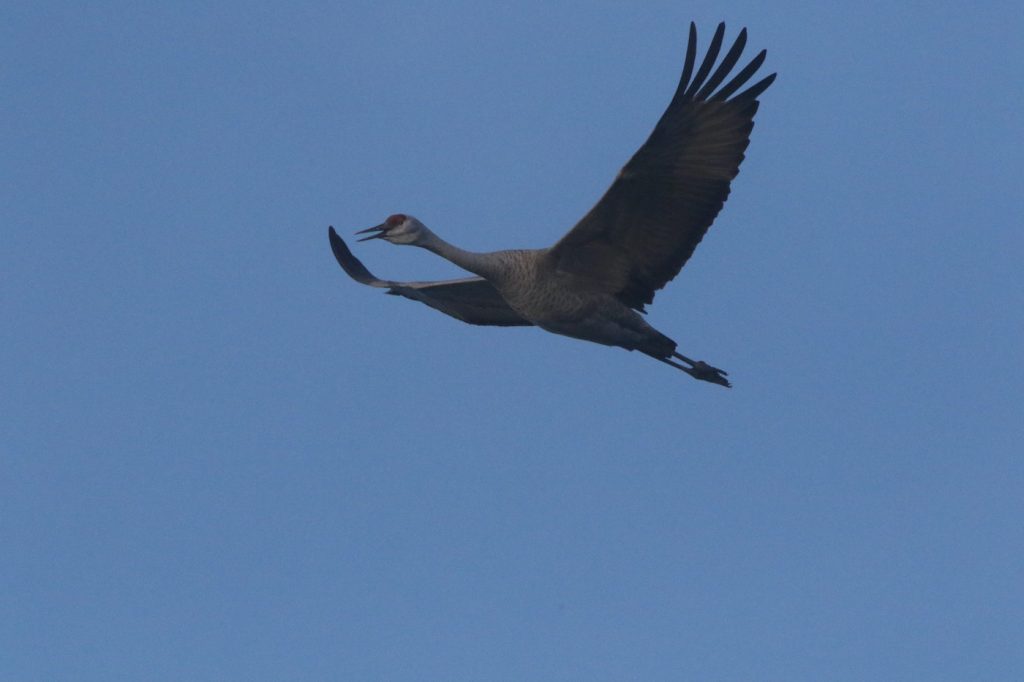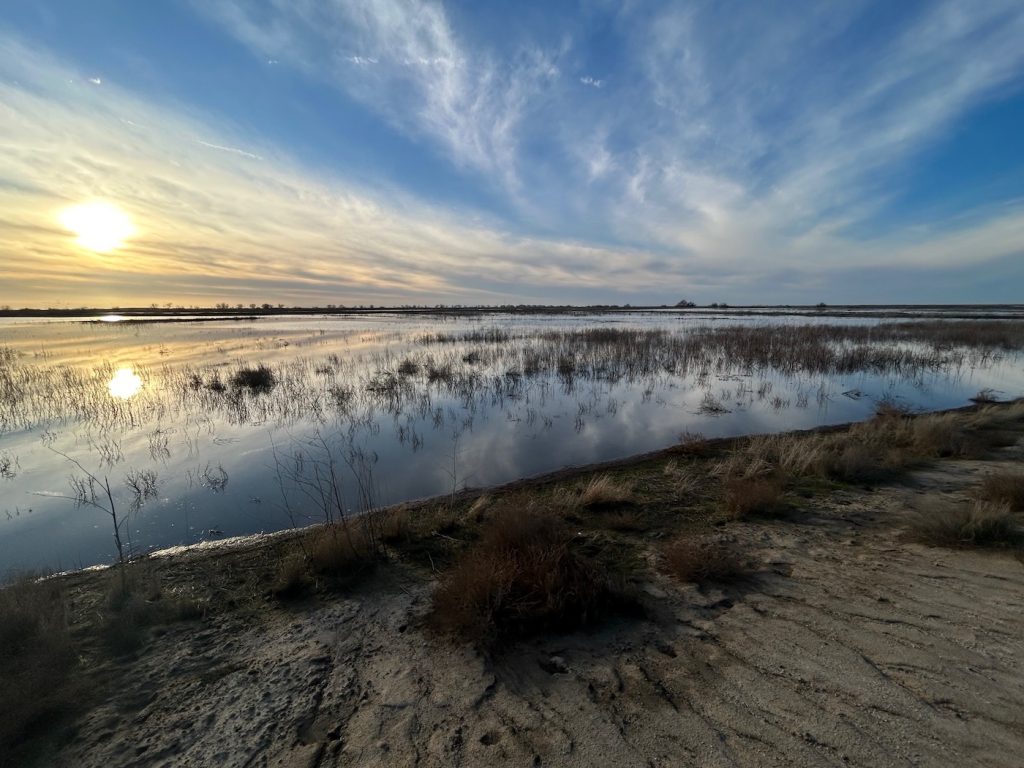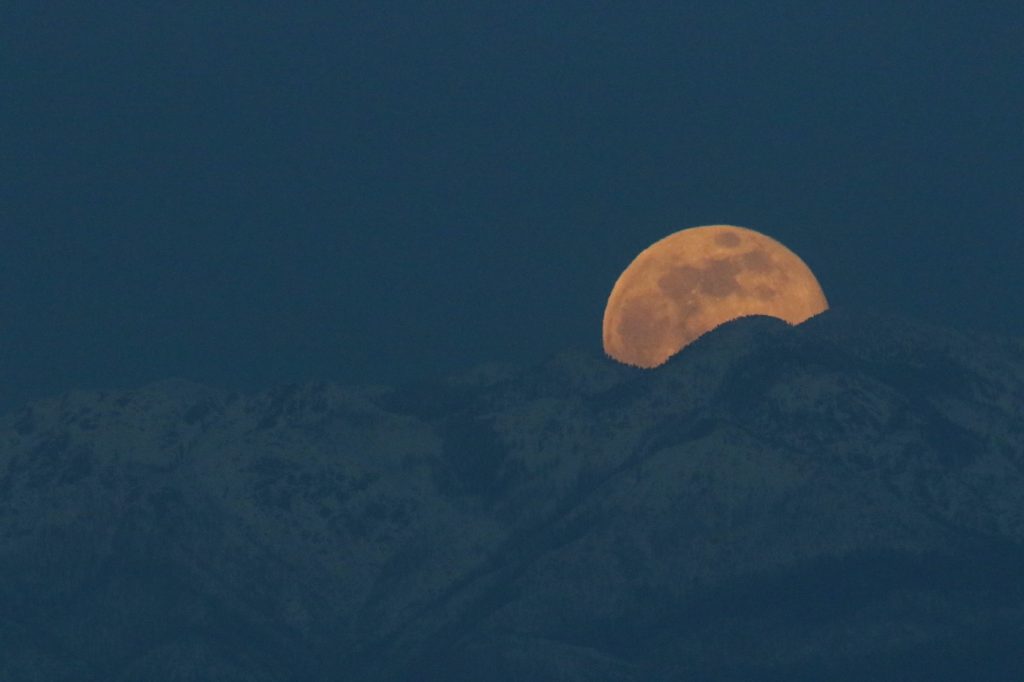Patchwork

As I walked across an icy Pixley National Wildlife Refuge (NWF), five miles west of Highway 99, it sounded as if I was inside a packed house of a football stadium. It was an hour before sunset, and it sounded as if it was that loud.
Just past sunset, squadrons of migratory sandhill cranes were flying into the refuge by the thousands, glassy, frigid ponds brimming from recent rains, awaiting their arrival. Winter months see as many as 6,000 sandhill cranes on the refuge.

At nearly 7,000 acres, the refuge is literally a postage stamp of what the San Joaquin Valley once was. The nearby Carrizo Plain National Monument to the west has always been considered the largest and best example of remaining grassland biome in California. It’s 250,000 breathtaking acres providing important habitat for more endangered species than any other location in the Golden State.
Other patches of adequate grassland habitat are mere smidges in the San Joaquin Valley. They are surrounded in agriculture, smothered by urban sprawl, railroads, and a maze of habitat-altering culverts and aqueducts. Pixley is bordered by rows of orchards, cattle grazing, and dilapidated farm buildings.
Those freezing ponds are the sandhill cranes’ haven for the night, an aquatic fortress to thwart advances by coyotes and bobcats lurking within the refuge, but also unfortunately packs of wild dogs running amok. To withstand those icy waters, sandhill cranes somehow slow down the amount of blood that’s needed to be warmed by constricting blood vessels in their feet. Their arteries and vessels in their legs are right next to each other. The colder blood is warmed before it reaches the body. Nature seemingly always finding its way.
Sandhill cranes aren’t alone though out on the refuge. The skies, grasslands, and surrounding ponds are loaded with snow and Canadian geese, white-faced ibis, northern shoveler ducks and pintails, black-necked stilts and many other waders, shorebirds, and waterfowl. Raptors such as Northern harrier, red-tailed hawks, Merlin, white-tailed kites, and American kestrels patrol the skies and enjoy the bountiful grasslands surrounding the ponds.


Pre-dawn hours on the refuge aren’t too shabby either. From those frigid ponds at first light, the sandhill cranes take flight, leaving the sanctity of those shallow waters. They fan out for the day, filling the skies in all directions to their favorite feeding grounds surrounding the refuge.
Photographically though, sunset is the best time to be on the refuge. There is a raised platform overlooking the ponds, an ideal locale to watch where avian species are flying to and from. The sun dips toward the southwest, and the few times I’ve been I’ve always waited until it gets dark before leaving. The light gets better and with multitudes of sandhill cranes flying to the ponds, the silhouettes of the birds inflight is a true highlight.
However, with all the recent storms moving through California from late December 2022, and now in January 2023, there was a great opportunity on a rare clear evening on the refuge. The west slope of the Sierra Range was cloaked in a blanket of fresh snow. Then, moments later, creeping up behind its steep rolling ridges just after sunset was a brilliant full moon.
As massive squadrons of cranes filled the skies, I found myself photographing cranes against those colorfully soft hues but also that beaming full moon. Before I knew it, the moon was too high in the night sky, and those melding pinks and oranges were no more.
I started walking back to my van, but the loud, rattling bugle-like calls of the sandhill cranes carried far beyond those lonely, muddy roads.





